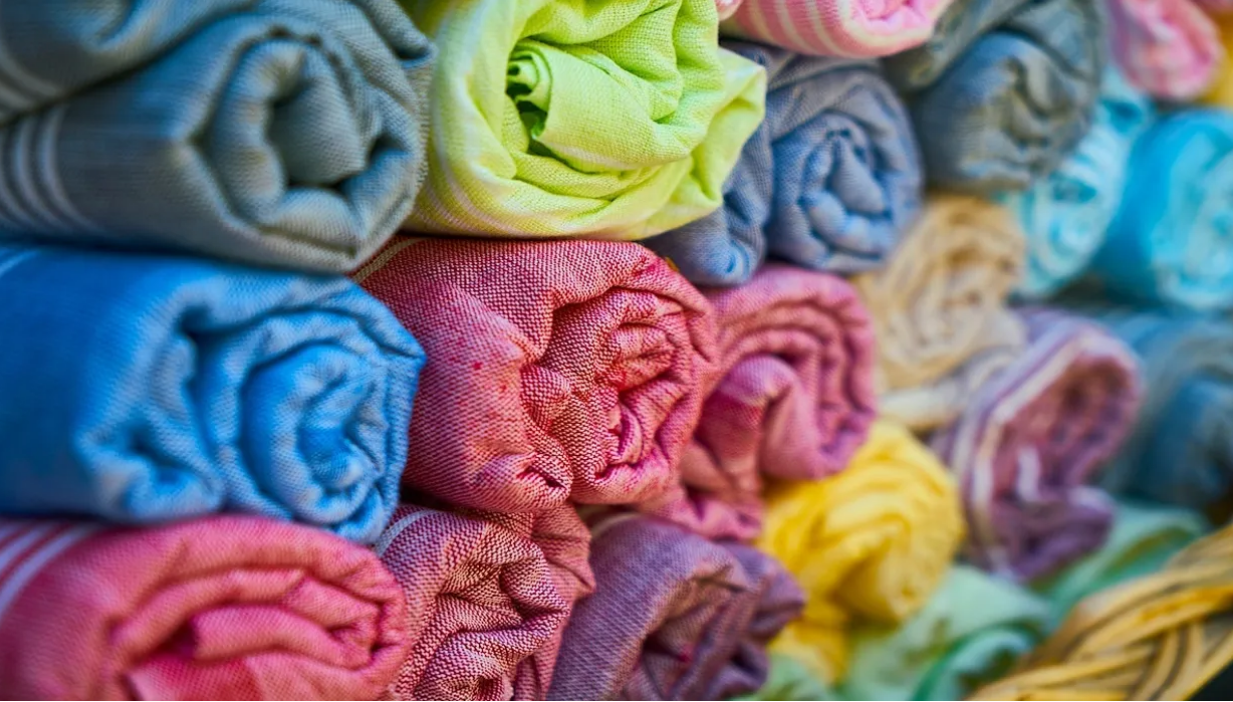Fast fashion has been called the second dirtiest industry in the world, next to big oil, and how we color our clothes is a large part of the problem. Now, Colorifix, a UK biotech company founded by Cambridge University scientists, has developed a new way to dye clothes that doesn’t harm the planet.
Historically, natural dyes extracted from plants and flowers were used to color fabrics. The production of modern chemical dyes uses more than 8,000 chemicals, solvents and additives to create different colors and effects on fabrics, reported Pure Earth and CNN. Many, like sulfur, arsenic and formaldehyde, are harmful to wildlife and humans, and end up in industrial wastewater from the dye production process, reported CNN.
In less developed Asian countries, where a large share of today’s clothes is produced, weak regulations and/or enforcement allow textile manufacturers to dump toxic substances directly into local waterways, reported CNN. This has caused the dyeing industry to become one of the most environmentally harmful in the world. In fact, according to the UN Environment Program, around 20% of global wastewater is generated during textile dyeing and processing.
“When we realized that so much of the pollution comes from something as simple as putting color into our clothes, we thought ‘there has to be a better way,'” Colorifix’s CEO Orr Yarkoni told CNN.
According to Yarkoni, Colorifix’s new method uses biotechnology and bacteria to eliminate the need for toxic chemicals and claims its processes use 90% less water and up to 40% less energy than conventional dyeing, reported CNN.
Unlike with natural dyeing, Colorifix pigments are not derived straight or extracted from plants or animals. And, unlike with chemical dyeing, they don’t use anything hazardous in the process, explained Yarkoni in a CNN video.
Instead, Colorifix “copies nature’s processes in a lab setting, by replicating the ‘DNA message’ that codes for color in an organism,” according to CNN. This tricks the genetically-modified bacteria to create and fill up with those exact same colors.
“So what we can do is take a feather off a parrot, scrape a few cells off … and in those cells, look for the DNA message ‘make red,'” Yarkoni told CNN. “We can then put that same message into our microorganism that will make that same red that the parrot makes the same way that the parrot makes it.”
Yarkoni’s team then duplicates the dyed bacterial cells in a fermenting machine, feeding them sugar molasses and nitrogen — byproducts from the agricultural industry, LA BioTech reported. The cells duplicate themselves every 25 minutes. The fermentation process which duplicates the bacteria is similar to beer, but instead of making alcohol, Colorifix makes pigments, CNN reported.
In an industry-first, the dyed bacteria are then applied onto the fabric directly and heated until they burst, releasing their dye onto the fabric, LA BioTech reported. The cell membranes then wash off but the color stays.
“What we’re doing is not just providing a new pigment. We’re providing a new way of getting the pigment into the fiber,” Yarkoni told LA BioTech.
This new way of applying dyes to fabrics is more efficient and environmentally-beneficial because it removes the middle step of isolating dyes from microbes and applying them to textiles, which is water- and chemical-intensive, Colorifix told CNN.
Yarkoni also touted the additional benefit of reducing fashion’s huge carbon footprint from shipping. Currently, the industry produces more greenhouse gas emissions per year than all international airline flights and maritime shipping trips combined.
Rather than shipping large amounts of dye, Colorifix can send five grams of color-packed bacteria to a dyehouse, and the microorganisms will multiply within 10 days to the point where the factory can produce 50 tonnes of dye solution a day, according to CNN.

